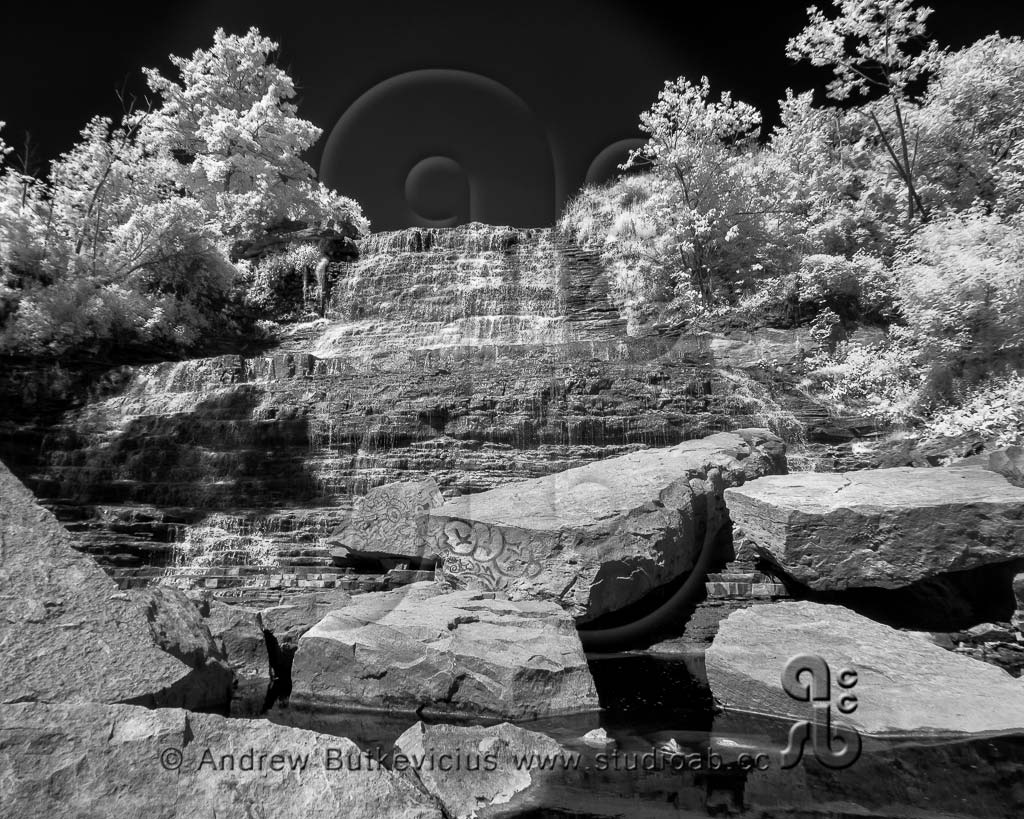Infrared is most known for its affinity to produce stunning black and white prints. This is largely due to the fact that I.R. film of the past primarily only came in black and white, however the effects are mesmerizing.
[su_row][su_column size=”1/2″]Because objects reflect light differently under infrared light, a black and white I.R. image will be very different from a color picture converted to black and white. These differences are most pronounced when filters are used that completely block out all visual light, leaving the image exposed only to infrared light.[/su_column] [su_column size=”1/2″]What I find most compelling about B&W I.R. prints is that they capture the world entirely with invisible light. Even though everything is shades of gray, the way the light reflects off of objects differently makes for images which are comprehensible but somehow altered, whether that change is in the tones of the foliage or the texture of skin. This change in reflectivity gives an inverted feeling to the photograph. Often viewers mistake them for negatives. However the changes are not as complete as a negative. Foliage produces a negative effect, while cement does not.[/su_column] [/su_row]
These I.R. characteristics produce differences between what we expect to see and what we are looking at. They can be striking and yet illusive, invoking very contemplative understanding of the image.










